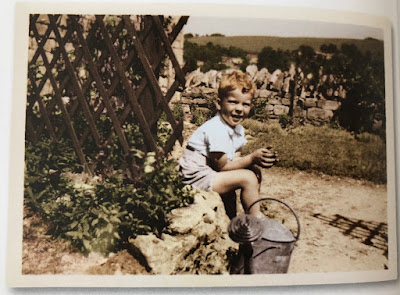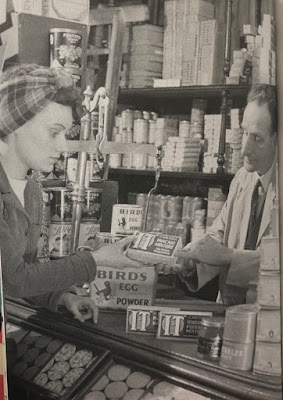“Digging for Victory”
When we imagine
food during the war, we picture rationing and basic recipes, areas I look forward
to discussing in later posts.
But, it is also interesting to note how the British people obtained and
cultivated some of the ingredients they needed to create those wartime meals!
I have recently visited the Imperial War Museum and as I toured the museum, I wandered into the book shop. The shop contained; Holocaust texts, books on wartime fashion and to my delight, a whole section on wartime food and rations. It was there that I came across an interesting text called: ‘Allotment & Garden Guide’ and that prompted my thinking in the direction of food cultivation and production during World War II.
In 1938, on the 3rd October, the Minister of Agriculture, Sir Reginald Dorman-Smith announced the implementation of the campaign to Grow More Food, later known as ‘Dig for Victory’. This was set to encourage the growth of vegetables and fruit. The ministry of Agriculture released the Allotment &Garden Guides at the beginning of 1945 and was aimed towards the novice gardener, guiding them through basic, monthly tasks.
Just Keep Digging!
The first periodical was published in January 1945. A real emphasis was placed on the desperate need to maintain crops at a time of food shortages, due to lack of imports. Lack of food of course could have resulted in famine and starvation! Whilst reading, I was presented with the sense of urgency and seriousness involved in gardening during the wartime: 'January is generally a fairly quiet time in the garden. But you need to push your digging and manuring whenever the weather and the state of the land permit' (35). The words 'push on' are comparative to a military command or motivation and the word 'need' presents the action of maintaining crops as mandatory and crucial. Gardening is referred to as a "job" (35), comparing it to work, again presenting it as essential to survival.
The Gardener’s Battlefield
The comparisons to the battle field “crop up” continuously throughout the guide. In April’s periodical, garden pests are referred to as ‘foes’ (71)! The wireworms are quite comically tagged as the ‘“underground” enemies’ (71). The allotment is clearly a battlefield of its own: ‘Wartime gardeners, who may have suffered badly from the ravages of pests, may well have thought gardening is just one long discouraging fight’ (71). For the wartime gardener, their fruit and veg represent the glories and victories of war but, they must overcome the pests to obtain “victory”! These periodicals didn’t just provide logical guidance and practical tasks but included patriotic fervour.Gender in the Garden
Before the war, the garden was essentially viewed as a
“masculine” space. However, this perspective was reconstructed by the lack of
male workers. As the husbands and brothers went off to fight, women began to
replace men in masculine "fields" of work , managing garden plots and
raising families!
 |
| Well-dressed Female Gardener at Kensington Gardens, p.23. |
 |
| Female personifications of April, p.67 |
 |
| Male Gardeners, p.57 |
Practicality Over Looks
I have predominantly discussed the work that goes into preparing the crops however, I also think it is important to note the presentation of food in the pictures and diagrams: |
| Diagram of lettuces, p.61 |
Images and Quotations from:
Way, Twigs. Allotment
& Garden Guide: A Monthly Guide
to Better Wartime Gardening. Kent: Sabrestorm Publishing, 2009. Print.




Comments
Post a Comment